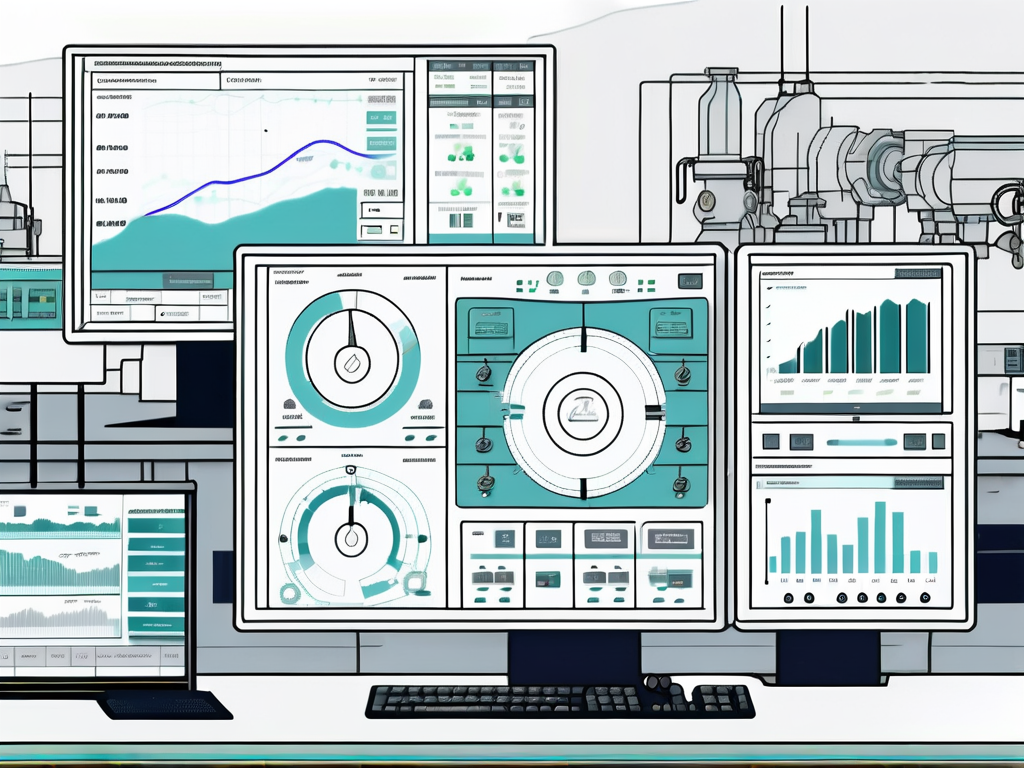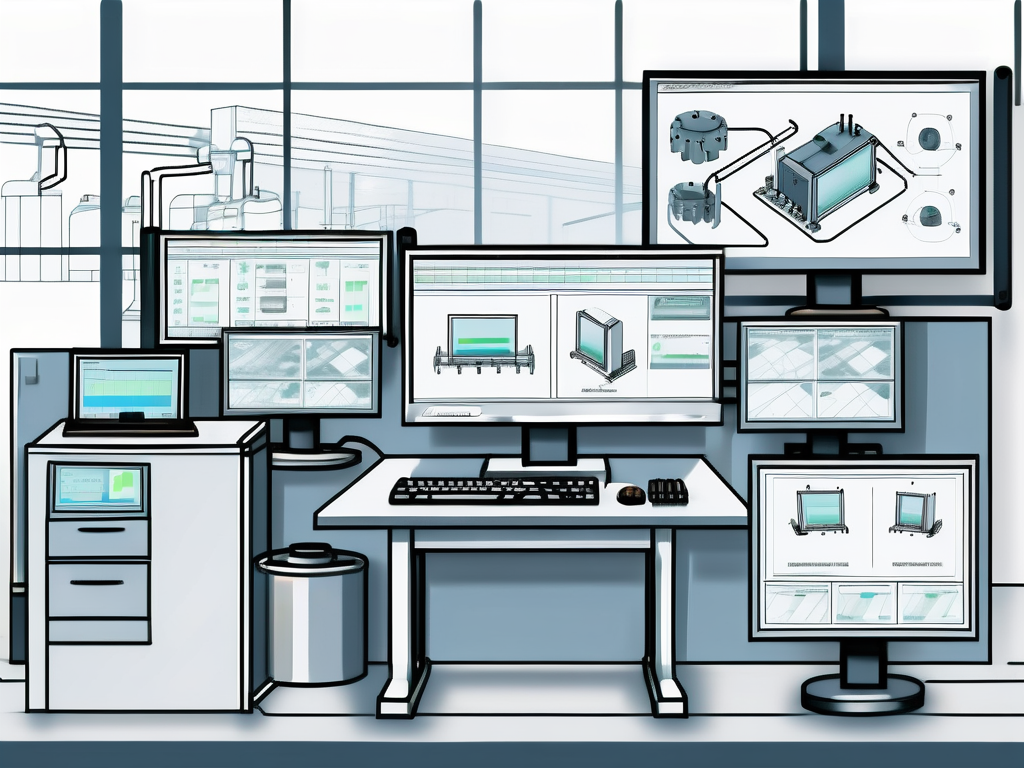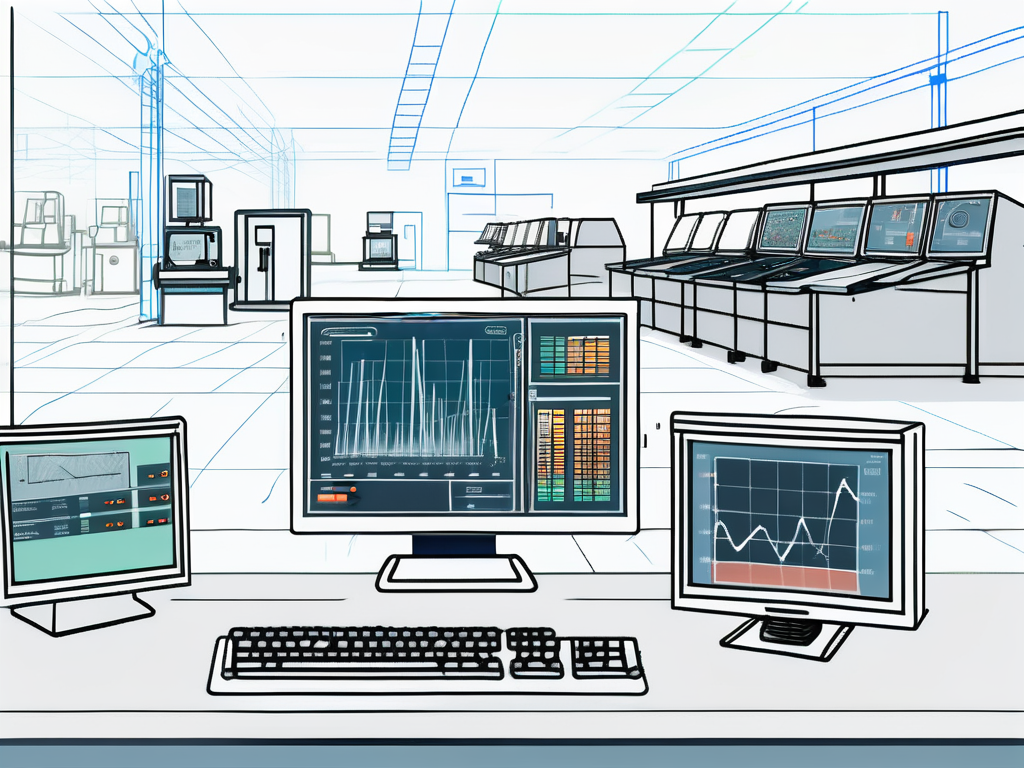In today’s competitive business landscape, it is critical for manufacturing companies to maximize efficiency and productivity on the shop floor. One way to achieve this is by implementing a robust shop floor control software. With so many options available in the market, selecting the best software for your business can be a daunting task. This article aims to guide you through the process, from understanding the basics of shop floor control software to evaluating different options and implementing your chosen software.
Understanding Shop Floor Control Software
Before diving into the selection process, it is essential to have a clear understanding of what shop floor control software is and its function within your business operations.

Shop floor control software plays a pivotal role in modern manufacturing environments, acting as the digital nerve center that orchestrates various production activities. It serves as a bridge between planning and execution, providing real-time visibility into the shop floor activities and enabling proactive decision-making to enhance operational efficiency.
Definition and Function of Shop Floor Control Software
Shop floor control software, also known as manufacturing execution systems (MES), is a suite of application software designed to monitor, control, and optimize manufacturing operations on the shop floor. It helps businesses streamline production processes, improve productivity, reduce errors, and make data-driven decisions.
Furthermore, shop floor control software integrates with other enterprise systems such as Enterprise Resource Planning (ERP) software to ensure seamless data flow across the organization. This integration enables better coordination between different departments, enhances inventory management, and provides a holistic view of the entire manufacturing process.
Importance of Shop Floor Control in Business Operations
Effective shop floor control is crucial for seamless workflow management, accurate production scheduling, timely order fulfillment, and efficient resource allocation. It ensures that your manufacturing operations run smoothly and efficiently, enabling your business to meet customer demands and stay competitive in the market.
Moreover, shop floor control software empowers businesses with actionable insights through advanced analytics and reporting capabilities. By analyzing key performance indicators (KPIs) and production metrics, organizations can identify bottlenecks, optimize processes, and drive continuous improvement initiatives to achieve operational excellence.
Key Features to Look for in Shop Floor Control Software
When evaluating shop floor control software options, there are several key features you should consider. These features will determine how well the software can meet your specific business needs and improve your shop floor operations.
Real-Time Data Collection and Analysis
A good shop floor control software should provide real-time data collection and analysis capabilities. This feature allows you to monitor production metrics, track work in progress, identify bottlenecks, and make timely adjustments to optimize performance. Real-time data empowers you to make informed decisions and proactively address issues before they impact production.
Integration with Other Business Systems
Integration is essential for seamless data flow between your shop floor control software and other business systems, such as enterprise resource planning (ERP) software and warehouse management systems (WMS). The ability to share information in real-time eliminates manual data entry, reduces errors, and ensures accurate inventory management and production planning.
User-Friendly Interface and Support
A user-friendly interface makes it easier for your team to navigate and use the shop floor control software effectively. Look for software that offers intuitive dashboards, customizable reports, and easy-to-understand visualizations. Additionally, consider the level of support provided by the software vendor. Responsive customer support ensures that any technical issues or inquiries are addressed promptly, minimizing downtime and maximizing productivity.
Furthermore, when selecting shop floor control software, it is important to consider the scalability of the solution. As your business grows and evolves, you need software that can accommodate increased production volumes and changing requirements. Look for software that offers scalability options, such as the ability to add new modules or expand the system’s capacity without disrupting your operations.
In addition, it is worth noting the importance of data security in shop floor control software. Your production data is valuable and sensitive, so it is crucial to choose software that prioritizes data protection. Look for software that offers robust security measures, such as encryption, access controls, and regular data backups. This ensures that your data remains confidential and protected from unauthorized access or loss.
Evaluating Different Shop Floor Control Software Options
Once you have a clear grasp of the essential features, it’s time to evaluate different shop floor control software options available in the market.

Choosing the right shop floor control software is a critical decision for any manufacturing business. The software you select will have a direct impact on your operational efficiency, production output, and overall competitiveness in the market. Therefore, it is essential to conduct a thorough evaluation of the available options to ensure you make an informed choice that aligns with your business goals and requirements.
Comparing Software Providers
Research and compare software providers based on their industry reputation, customer reviews, and track record. Look for companies that have experience working with businesses similar to yours and have a proven track record of providing reliable and innovative shop floor control solutions.
Furthermore, consider reaching out to existing clients of the software providers to gather firsthand insights into their experiences. Understanding how well the software performs in real-world scenarios and its impact on day-to-day operations can provide valuable perspective in your decision-making process.
Assessing Software Scalability and Flexibility
Consider your business’s growth potential and evaluate how well the software can scale to accommodate increasing production volumes or changing manufacturing processes. Look for software that offers flexibility and can adapt to your evolving business needs without requiring significant modifications or customizations.
Scalability is not just about handling higher production volumes; it also involves the software’s ability to integrate with other systems, support new technologies, and meet regulatory requirements as your business expands. A scalable and flexible shop floor control software will future-proof your operations and ensure long-term success.
Considering Cost and Value for Money
While budget is an important consideration, it shouldn’t be the sole determining factor. Consider the value for money offered by the software, taking into account its features, functionality, scalability, reliability, and customer support. Investing in a high-quality shop floor control software may yield significant returns in terms of improved efficiency and productivity.
Additionally, factor in the total cost of ownership, including implementation, training, maintenance, and potential upgrades, to get a comprehensive understanding of the software’s long-term value proposition. A software solution that aligns with your budget constraints while delivering tangible benefits and a strong return on investment is key to maximizing its value for your business.
Implementing Your Chosen Shop Floor Control Software
Once you have selected the best shop floor control software for your business, it’s time to prepare for its implementation. This crucial step involves not only the technical aspects but also the human element within your organization.

One important aspect to consider is the customization of the software to fit your specific business needs. Work closely with your software provider to tailor the system to your processes and workflows. This customization can streamline your operations and ensure that the software aligns perfectly with your business requirements.
Preparing Your Team for the Transition
Ensure that your team is adequately trained on using the new software. Provide comprehensive training sessions that cover the software’s features, functionalities, and best practices for maximizing its benefits. Encourage open communication and address any concerns or resistance to change to ensure a smooth transition.
Furthermore, consider appointing internal champions who can act as advocates for the new software. These individuals can provide support to their colleagues, answer questions, and help facilitate a positive attitude towards the change.
Ensuring Smooth Integration with Existing Systems
Work closely with your software vendor to ensure a seamless integration between the shop floor control software and your existing systems, such as ERP and WMS. Test the integration thoroughly before going live to avoid any disruptions to your operations.
Moreover, it is essential to establish clear communication channels between different departments and stakeholders involved in the integration process. This collaboration can help identify potential issues early on and ensure that the integration is successful.
Ongoing Maintenance and Support
Regularly monitor the performance of your shop floor control software and address any software updates or maintenance requirements promptly. Stay in touch with your software vendor for ongoing support and leverage their expertise to optimize the software’s performance and address any issues that may arise.
Additionally, consider setting up regular feedback sessions with end-users to gather insights on their experience with the software. This feedback can help identify areas for improvement and ensure that the software continues to meet your evolving business needs.
By carefully selecting the best shop floor control software for your business and implementing it effectively, you can enhance your shop floor operations, improve productivity, and drive overall business growth.




